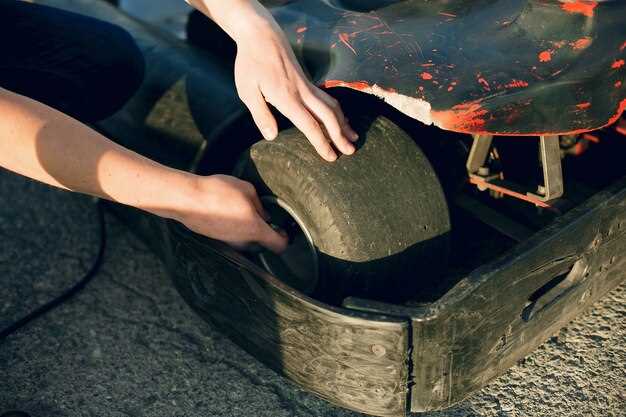
How to restore foggy headlights

Over time, exposure to the elements can lead to foggy headlights, diminishing nighttime visibility and posing a safety risk for drivers. Foggy headlights not only detract from the appearance of your vehicle but also reduce the effectiveness of your lights. Thankfully, restoring these headlights is a manageable task that can be accomplished with a few simple techniques and materials.
The process of restoring headlights typically involves removing the oxidized layer on the lens, which causes the cloudiness. Without proper maintenance, this oxidation can accumulate, leading to decreased illumination and potentially dangerous driving conditions. By following the right steps, you can achieve clear headlights that restore both functionality and aesthetic appeal to your vehicle.
In this article, we will explore various methods to effectively restore foggy headlights, covering both DIY techniques and commercial products. Whether you choose to use household items or specialized kits, you will discover how simple it can be to regain clear visibility and enhance the safety of your driving experience.
Identifying Common Causes of Headlight Fogging
Foggy headlights can significantly reduce visibility while driving, making it essential to identify the common causes behind this issue. One of the primary reasons for headlight fogging is the accumulation of moisture within the headlight housing. This can occur due to cracks or vulnerabilities in the lens that allow water to seep in, leading to a foggy or discolored appearance.
Another contributing factor is the degrading quality of the headlight lens itself. Over time, UV rays from the sun can cause the plastic lens to become oxidized and discolored. This oxidation not only reduces clarity but also compromises the headlight’s ability to illuminate the road effectively.
Improper installation or damage from external factors can also result in foggy headlights. If the sealing around the headlight is compromised, moisture can easily infiltrate, causing condensation to form. Similarly, rough weather conditions or debris on the road can lead to scratches or cracks that deteriorate the headlight’s integrity.
Additionally, exposure to extreme temperatures can affect headlight performance. Rapid fluctuations between cold and hot temperatures can create condensation inside, further exacerbating fogging issues. Regular maintenance and inspection can help in identifying and preventing these common causes, ensuring optimal visibility on the road.
Step-by-Step DIY Techniques for Clearer Headlights

Restoring foggy headlights can significantly enhance visibility and improve the overall appearance of your vehicle. Follow these straightforward techniques to achieve clearer headlights using common household items or readily available products.
Materials Needed: Baking soda, water, vinegar, toothpaste, microfiber cloth, sandpaper (various grits), clear coat spray, and masking tape.
Step 1: Prepare the Area
Start by ensuring that the headlight surface is clean. Wash the area surrounding the headlights to remove any dust and grime. Use masking tape to protect the car’s paint around the headlights.
Step 2: Cleaning with Baking Soda
Mix equal parts of baking soda and water to create a paste. Apply the mixture to the headlight surface using a microfiber cloth. Gently scrub in circular motions for 3-5 minutes, then rinse with water. This method can help remove minor oxidation.
Step 3: Toothpaste Application
If the headlights are still cloudy, apply a small amount of non-gel toothpaste to a clean cloth and rub it on the surface. The mild abrasives in the toothpaste help polish the lens. Continue scrubbing for several minutes, then rinse thoroughly.
Step 4: Sanding Technique
For more severe fogging, use sandpaper. Start with a coarse grit (around 400) and gently sand the headlight in a circular motion. Progress to finer grits (800, then 1000) to smooth the surface. Keep the headlight wet during this process to minimize scratches.
Step 5: Final Clean and Dry
After sanding, clean the headlight one last time with soap and water, then dry it with a microfiber cloth. Ensure no residue remains on the surface.
Step 6: Seal with Clear Coat
To protect the restored headlight, apply a clear coat spray designed for automotive use. Follow the product instructions for best results. This protective layer will help prevent future fogging and yellowing.
By following these step-by-step techniques, you can effectively restore your headlights, improving nighttime visibility while contributing to your vehicle’s safety and aesthetic appeal.
Maintaining Headlight Clarity After Restoration

Once you have restored your foggy headlights, it is essential to implement ongoing maintenance practices to ensure lasting clarity and optimal visibility. Regular upkeep can prevent the reoccurrence of cloudiness and extend the lifespan of your headlights.
1. Clean Regularly: Periodically wash your headlights with mild soap and water to remove dirt and road grime. Avoid abrasive materials that can scratch the surface. A soft microfiber cloth works best for gentle cleaning.
2. Apply Protective Coatings: After restoration, consider applying a UV sealant or clear coat specifically designed for headlights. This protective layer can shield against harmful UV rays, which contribute to the yellowing and dullness of headlight lenses over time.
3. Avoid Harsh Chemicals: Refrain from using harsh cleaning agents or chemicals on your headlights. Substances containing ammonia or strong solvents can damage the protective layer, leading to quicker deterioration.
4. Regular Inspections: Make it a habit to inspect your headlights regularly. Look for any signs of fading, cloudiness, or damage. Early detection allows for timely restoration before visibility becomes compromised.
5. Parking in Shade: Whenever possible, park your vehicle in shaded areas or garaged spaces. Direct sunlight can significantly accelerate the degradation of headlight clarity, so minimizing exposure will help maintain their effectiveness.
6. Ensure Correct Headlight Alignment: Improperly aligned headlights can reduce visibility and lead to increased wear. Regularly check and adjust the alignment as necessary to ensure optimal performance and safety on the road.
Implementing these strategies will help maintain the clarity of your headlights, ensuring that you maintain optimal visibility while driving, enhancing safety for you and others on the road.